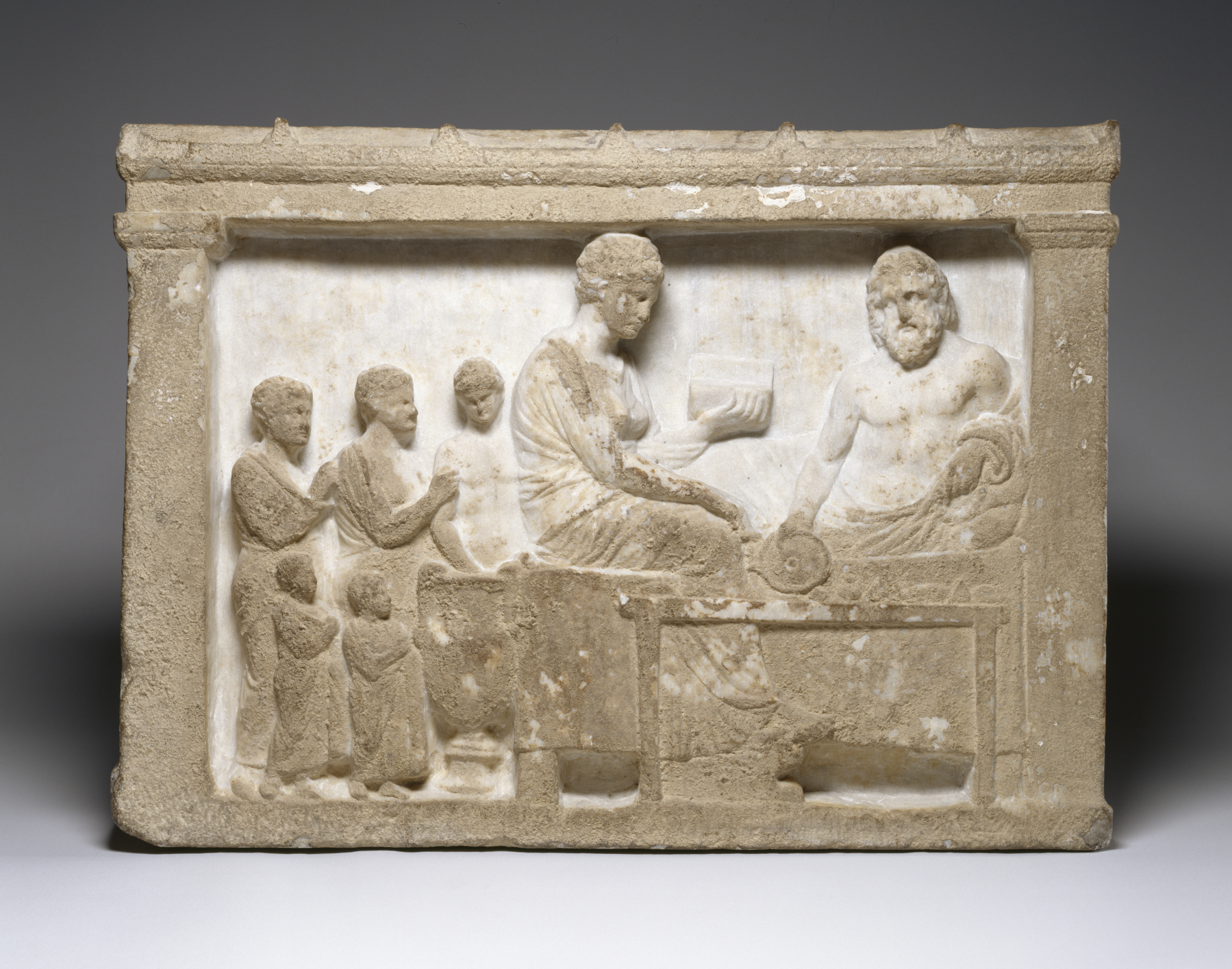Banquet Relief
(Ancient Greece )
The banquet scene, of Near Eastern origin, was used for Classical funerary reliefs and also as votive offerings to gods. Here, the deceased male reclines at his funerary banquet accompanied by his wife and family. The large vessel holds wine; on the table are an incense burner, cakes, and fruits. Banquet reliefs are important because they illustrate both the domestic setting and the traditions of the ritual funerary meal. As in most grave sculpture of this period, the figures are not actual portraits, but instead represent generalized types.
Provenance
Provenance (from the French provenir, 'to come from/forth') is the chronology of the ownership, custody, or location of a historical object. Learn more about provenance at the Walters.
Spink and Son, London [Octagon, Winter 1966, 8] [date and mode of acquisition unknown]; Walters Art Museum, 1967, by purchase.
Exhibitions
| 2009-2011 | Heroes: Mortals and Myths in Ancient Greece. The Walters Art Museum, Baltimore; Frist Center for the Visual Arts, Nashville; San Diego Museum Of Art, San Diego; Alexander S. Onassis Public Benefit Foundation (USA), New York. |
| 1988-1989 | From Alexander to Cleopatra: Greek Art of the Hellenistic Age. The Walters Art Gallery, Baltimore. |
| 1978 | In Search of Ancient Treasure: 40 Years of Collecting. The Walters Art Gallery, Baltimore. |
Conservation
| Date | Description | Narrative |
|---|---|---|
| 7/20/1970 | Treatment | cleaned |
| 1/23/1978 | Treatment | cleaned |
| 1/25/1978 | Treatment | cleaned |
| 11/8/1988 | Treatment | cleaned; loss compensation |
Geographies
Greece (Place of Origin)
Measurements
H: 16 1/4 x W: 22 1/2 x D: 3 7/8 in. (41.2 x 57.1 x 9.9 cm)
Credit Line
Museum purchase with funds provided by the S. & A.P. Fund, 1967
Location in Museum
Accession Number
In libraries, galleries, museums, and archives, an accession number is a unique identifier assigned to each object in the collection.
In libraries, galleries, museums, and archives, an accession number is a unique identifier assigned to each object in the collection.
23.222


